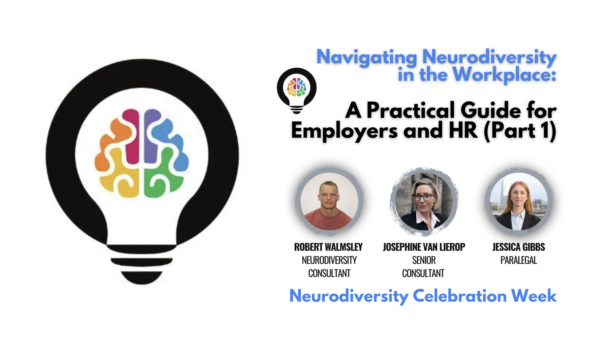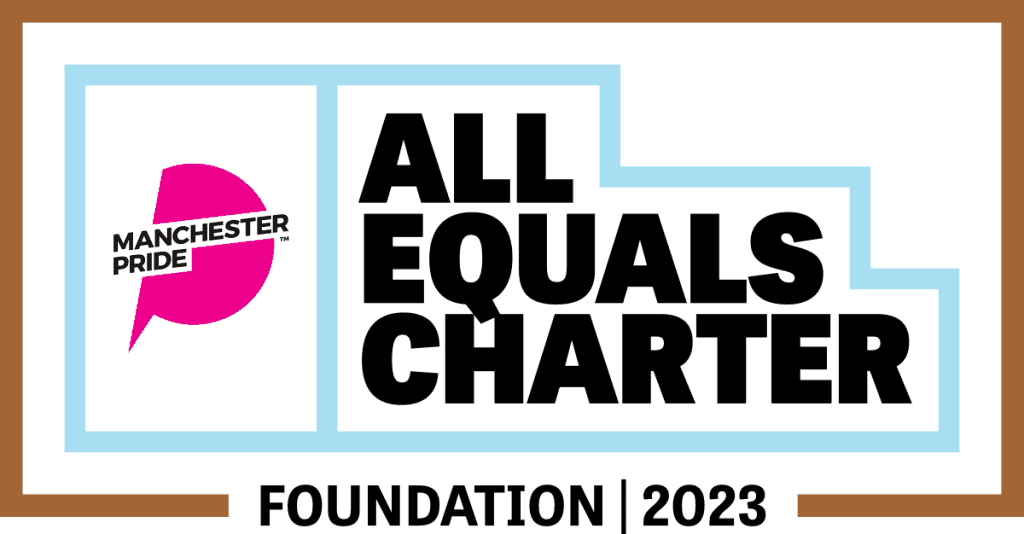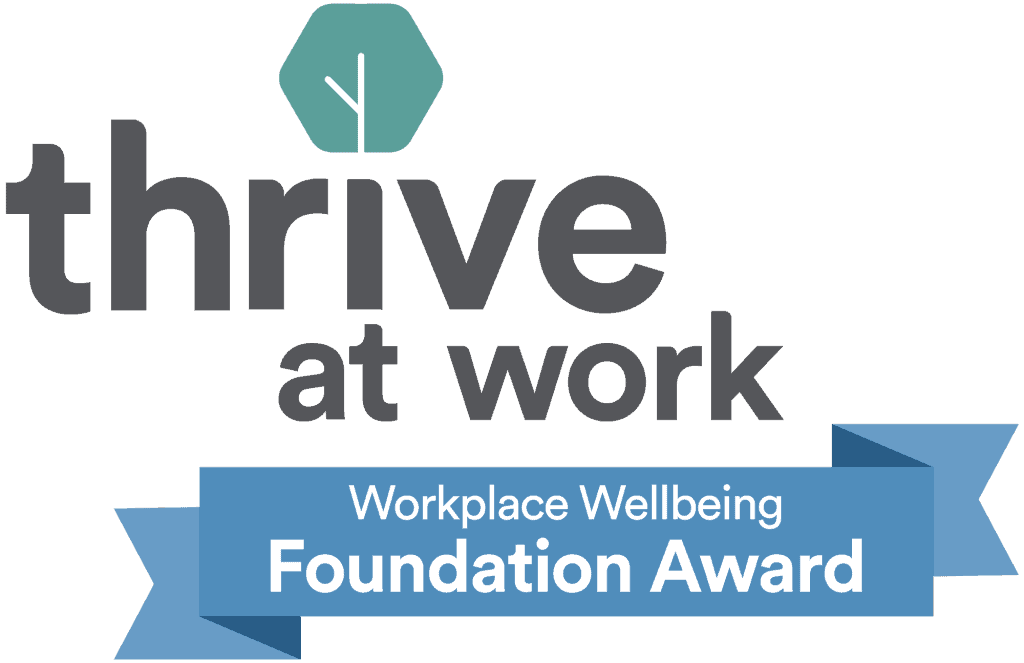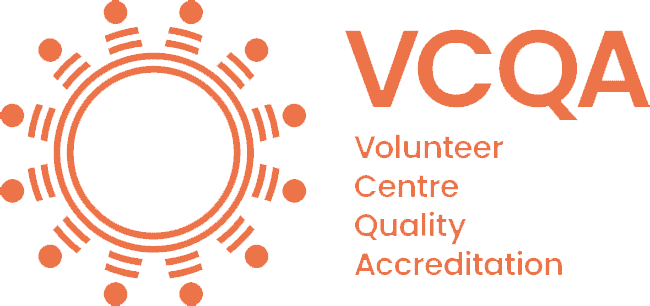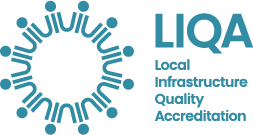Understanding neurodiversity’s nuances is essential for building genuinely inclusive workplaces. This series aims to demystify the topic, providing employers and HR executives with practical strategies to empower and uplift neurodivergent employees.
Here’s a breakdown of what you can expect:
- Article One: Understanding Neurodiversity – Explore the meaning of neurodiversity, its historical context, and a glossary of key terms for workplace inclusion.
- Article Two: Employment Law and Neurodiversity – We’ll examine the legal landscape, outlining how and when employer’s obligations will be engaged pursuant to the Equality Act 2010, the importance of reasonable adjustments, and the potential consequences for employers who get this wrong.
- Article Three: Best Practices and Resources – Discover actionable strategies and helpful resources to create inclusive hiring practices, foster an inclusive workplace culture, that respects and provides essential support for all employees.
This series is designed to empower you with practical knowledge. By understanding neurodiversity, you can navigate around pitfalls in employment law, and by applying best practices, you can foster a workplace where every employee has the opportunity to thrive. Let’s get started!
Article One – Neurodiversity
Neurodiversity is a term coined in the late 1990s by sociologist and autism advocate Judy Singer, and it captures the plain fact that autism, and a range of other conditions like ADHD, dyspraxia, dyslexia and more, are part of the endlessly different ways that human minds are wired. As a word, \’neurodiversity\’ describes the whole of humanity.
Neurodiversity and neurodivergence are commonly misunderstood or conflated incorrectly.
What Neurodiversity Doesn’t Mean:
- A trait an individual possesses.
- A perspective, an approach, a belief, or a political position.
- If your neurocognitive function diverges from societal norms, you don’t have neurodiversity, you’re neurodivergent.
Correct Usage:
“Our workplace embraces multiple training strategies to accommodate the neurodiversity of our employees.”
Incorrect Usage:
“My neurodiversity makes it hard for me to cope with work.”
It’s neurodivergence, not neurodiversity. An individual, by definition, cannot be “diverse” or “have diversity.”
“Autism, ADHD, and dyslexia are forms of neurodiversity.”
In this case, there’s no such thing as “forms of neurodiversity”. Autism, ADHD, and dyslexia are forms of neurodivergence.
We’re all neurodiverse but we’re not all neurodivergent.
Neurodivergent and Neurodivergence
Neurodivergent, often abbreviated as ND, describes an individual whose brain functions differently from what’s considered typical. The term, coined in 2000 by neurodiversity activist Kassiane Asasumasu, includes conditions like ADHD, autism, dyslexia, and dyspraxia. Neurodivergence is the state of being neurodivergent. Importantly, language surrounding neurodiversity is evolving. Terms like neurodistinct, neurominority, and neurospicy are also used by some individuals to describe their experiences.
Examples of neurodivergence include, but are not limited to:
- Autism or the Autistic spectrum
- Asperger’s Syndrome (which falls within the Autistic Spectrum)
- Dyslexia
- Dyspraxia
- ADHD (Attention Deficit Hyperactive Disorder)
- Epilepsy
- Bipolar
Correct Usage:
“Our workplace aims to be inclusive of employees who are Autistic, dyslexic, or otherwise neurodivergent, though there are some types of neurodivergence that we’re still seeking ways to accommodate.”
“Neurodivergent employees may prefer clear, written instructions instead of lengthy verbal explanations.”
Neurotypical (NT)
Neurotypicality, a term playfully coined in 1998 by autistic advocate Laura Tisonick’s fictional ‘Institute for the Study of the Neurological Typical’ (ISNT), highlights the dominant style of thinking in society. It’s important to understand it doesn’t mean “normal”, but simply one way of thinking as opposed to neurodivergent experiences. The ISNT’s autistic writers cleverly examined neurotypical traits, mirroring the way society views those of neurodivergent individuals. Neurotypicality is the usual way of thinking in society, against which we compare neurodivergent experiences. This shows how different people’s minds can be.
Correct Usage:
“A neurotypical manager might assume an employee who avoids eye contact is disengaged. Understanding neurodivergence can challenge such biases and foster more inclusive communication styles.”
Neurominority
Neurominority refers to individuals whose brains function differently from what\’s considered typical within a given society. It includes people who are autistic, have ADHD, dyslexia, bipolar disorder, and other conditions affecting how people think, process information, and interact with the world. These individuals often exhibit distinct characteristics that diverge from the typical styles of thinking seen in the majority of the population.
Neurodiverse
Neurodiverse groups encompass individuals with a wide range of neurocognitive functioning, including both neurotypical and neurodivergent members. A workplace, for example, is considered neurodiverse when it includes and supports employees across the neurological spectrum. This diversity, similar to the rich tapestry of cultures and ethnicities in our world, offers a valuable blend of perspectives, thought processes, and abilities. Neurodivergent staff, like neurotypical staff, all have different strengths, specialisms and ways of working which can be harnessed by employers.
Correct Usage:
“We use various communication strategies to accommodate our highly neurodiverse workforce.”
“Our team’s composition reflects a neurodiverse workplace, with colleagues who are neurotypical, autistic, have ADHD, or experience a combination of these.”
Incorrect Usage:
“This group welcomes individuals with autism and other neurodiverse people.”
There no such thing as a neurodiverse person.
The correct phrase here would be “Autism and other neurodivergent people.”
“This group is open to both neurotypicals and the neurodiverse.”
The spectrum of neurodiversity encompasses the entire human species, so we can’t label any subset of the human species as “the neurodiverse.”
Neurotypicals are also part of the spectrum of human neurodiversity, so it makes no sense to say “neurotypicals and the neurodiverse,” as if those were two separate things.
The correct way to say this would be, “This group is open to both neurotypicals and the neurodivergent.”
We believe that understanding neurodiversity terminology is a crucial step towards building more inclusive and equitable workplaces. This knowledge empowers employers and HR professionals to create environments where all employees, regardless of their neurological makeup, feel valued and supported.
Contact details of the co-authors:
- Robert Walmsley – [email protected] / 07828901443
- Jessica Gibbs, Paralegal – [email protected] / 07503 402037
- Josephine van Lierop, Senior Consultant – [email protected]

